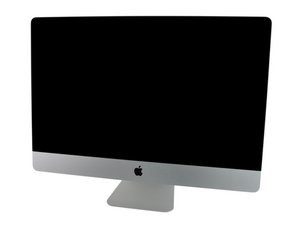This is also not entirely correct and thus might be misleading:
I have the 27" iMac 10,1 from late 2009, i. e. the Intel Core 2 Duo version and it DID have a "pinned" thermal sensor for Apple's proprietary HDD.
This MIGHT be different on the Core i5 and Core i7 models from the same year (I believe they're called iMac 11,1), but I don't know.
There are some other noticeable differences between these two lines _from the same year_, which is very confusing, unfortunately.
E. g. the i5 and i7 models can handle 32 GB of RAM, the Core 2 Duo only 16.
Anyway: As per a tip from a private website from someone who modded his iMac with a pinned thermal sensor, I shorted the cable from that HDD and left it pinned to the motherboard. I stuck a bent metal (duh!) paper clip into the two pin-outs that would normally go into the HDD.
Apparently that tricks the iMac into not ramping up the fans to full speed. And that works.
BUT -- and it would be great if s.o. could confirm this -- I have not heard the fans go beyond the minimum speed yet on their own, although I left several intense programs running and used the infamous terminal command to max out the CPU to 100 %.
The smcFanControl (which I installed only to test if the fans still do work) lets me ramp up the fans, but of course I would need the iMac also do that by itself if need be. Otherwise it throttles down or might even fry parts inside. According to the sensors it never got hotter than around 55° Celsius. But I don't know if all this is normal.
This is my 27" iMac from late 2009 (iMac 10,1, Intel Core 2 Duo, 3,06 MHz):
This cable (593-1033 A) connects to the thermal sensor on the Apple HDD:
As advised in other forums, short the cable and leave it attached to the motherboard. Check with a multimeter that there's connection:
Heat-shrink to not short out anything after reassembly:
I drilled two holes in the provided bracket and mounted the SSD. The taped on (and shorted) cable doesn't measure anything here and neither does it get thermal data from the SSD. The tape is just for it to not dangle around inside.


 35
35  331
331  971
971 







